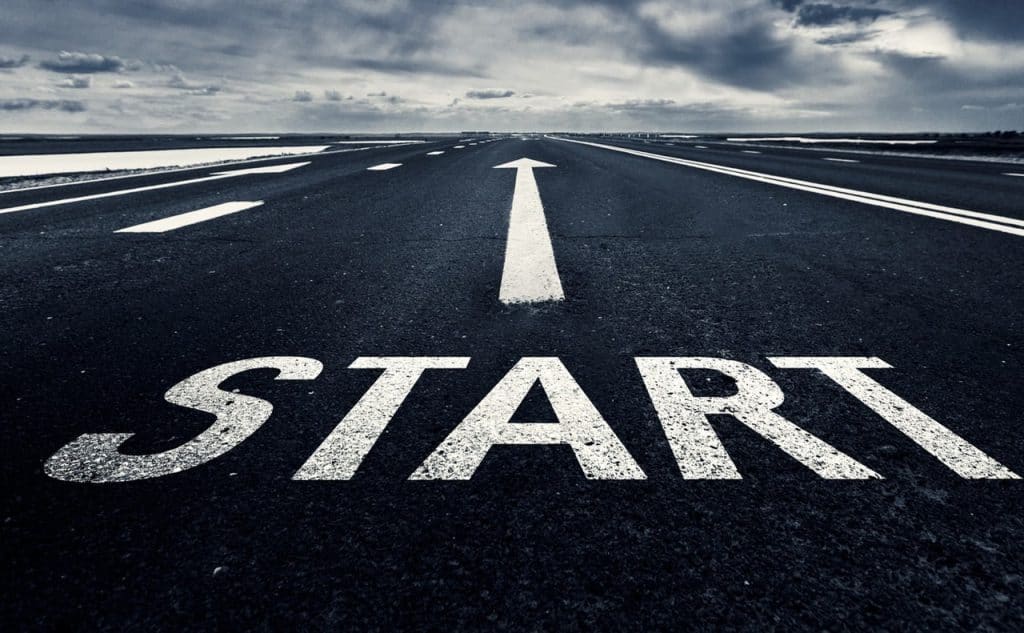Whatever language or subject they teach, experienced teachers are powerful advocates for starting every lesson in the right way. The use of starter or warm-up activities are of vital importance in the language classroom and help you ensure that the lesson starts and proceeds on your terms rather than those of your students!
Without a clear plan for the beginning of every lesson, classes can begin without any real sense of pace or purpose. As learners wander slowly into the classroom, chatting to their friends, they’re unprepared for learning. It can therefore be difficult to capture their attention and focus. And if you don’t do that from the start, it’s unlikely you’ll engage them as the lesson progresses.
An engaging and well-planned starter activity is a key part of any outstanding lesson. It starts the lesson with impact and sets the tone for what is to come by involving your learners from the moment they enter your classroom. This blog post looks at what makes a great starter or warm-up activity, how to plan and prepare them and provides some suggestions for compelling starters that work in every language classroom!
What is a starter activity in language teaching?
As the name suggests a starter activity takes place at the beginning of each language lesson, exploiting the moment when pupils are usually at their most receptive and their concentration levels are high. Most starter activities last no more than 10 minutes; they tend to require little explanation from the teacher and provide time for learners to work collaboratively to get immediately engaged in the lesson’s content.
One common analogy is to see the starter as bait – if students take it, then you’ll have them hooked (or engaged!) for the rest of that lesson and probably beyond! Try to ensure that your starter activities are accessible to all learners, engaging everyone from the off. Starters should also offer all students the chance to succeed and build confidence. Of course, like the rest of the lesson, starters can offer extension activities for more able students to move onto once they’ve successfully completed the first part.
All of the above helps to create a purposeful atmosphere for learning and makes it clear to the students who is in charge of the lesson. Over time, pupils will arrive for their lessons ready to learn and the low-level chatter and disruption at the beginning of each lesson is more easily reduced.
Why use a starter activity?
Building on the above, it’s clear that there are many advantages to using a starter activity at the beginning of every lesson. A more complete review of the literature in the space identifies a number of other benefits for teachers and students.
They help language teachers to:
- Quickly see what pupils already know / understand and where any gaps in their knowledge lie.
- Create a positive environment for learning.
- Reduce disruptive behaviour and the need for classroom management.
- Enjoy a few extra minutes to get materials, themselves or the classroom organised and ready for the rest of the lesson.
Starter activities also enable learners to:
- Reconnect with prior content – a good starter activity helps build on what has already been learned in previous lessons.
- Tackle a new topic / subject in an easy to digest, not-at-all scary way.
- Identify gaps in their knowledge and highlight areas for further work.
- Practice key skills frequently on a little-and-often basis;
- Feel confident and prepared. This is particularly important for students with learning challenges, where a lack of routine can increase anxiety and frustration.
What does a good starter activity look like?
There’s a wealth of online resources for teachers to help them plan engaging and impactful starter activities. Much of this material is not specific to language teaching, but their principles and best practices can be easily applied across subjects.
One teacher writing an “expert’s guide to the perfect starter” identifies three key elements which all good starters share. These are: “they focus on learning; they make students think; and they hook them into the lesson.”
Generic advice published by the UK’s Department for Education noted that successful starter activities typically included the following characteristics:
- All pupils engage fully in learning from the outset;
- they gain an understanding of the objectives and purposes of the lesson;
- there is a sense of pace;
- there is a clear purpose / objective for learners to work towards;
- pupils spend most of their time on-task and focused on learning;
- the activity contains a clear learning challenge;
- there is an appropriate level of challenge that enables pupils to make good progress in their learning
The report also details that “a well-balanced starter allows pupils to work without intervention from the teacher for some of the time, but also includes direct and specific teacher input.”
The role for the teacher in any starter activity is therefore four-fold: directing the learning, moving it on, differentiating / personalising the activity to stretch learners and “ensuring that the main teaching points are conveyed clearly.”
How to plan and prepare a lesson starter?
The other core role for the teacher is to plan and prepare the starter activity. Evidently good planning is essential – this helps to ensure that the starter activity works as a separate part of each lesson but still also contributes to the achievement of the lesson’s wider objectives.
The starter activity can and should be planned as an integral part of the overall lesson plan – you do write a lesson plan for every lesson don’t you? Include details of what you’re going to be teaching, how you’re going to deliver it and identify which curriculum goals / learning objectives will be addressed as a result.
Additionally, don’t forget to consider classroom management and organisation to ensure that the starter (and the rest of the lesson) runs smoothly. As part of this, it is worth thinking about whether you’ll hand the starter to learners as they enter the classroom or is it waiting for them on their desks? Of course, this may depend on the class you’re teaching and some flexibility will be required, but do keep mixing things up. The positive impact of using a starter activity quickly disappears if the same formula is constantly repeated!
Best starter activities for language teaching
Of course one of the very best ways to keep starter activities fresh and engaging is to use creative ideas that motivate students and get them in the learning mode. Again there’s a wealth of information and inspiration online – whether it’s recap questions, image description tasks, articulate, true or false, flashcards, anagrams, word searches, crosswords, news stories, interactive tools, definitions, quizzes or quick 2-5 minute group discussions on a relevant contemporary topic!
Do also check these four websites for specific language teacher inspiration – ESL Games, the EU, the Ideal Teacher and OUP. There are, of course, loads of others out there, so take the time to explore online and find some that work for you!
Whatever language you teach and however you start your language lessons, Sanako’s market-leading tools are here to help. We’re constantly innovating and looking to use technology to enable language educators to teach languages more efficiently and more successfully. It’s why the world’s leading educational institutions choose Sanako as their preferred supplier to support online and in-person lesson delivery.
If you are interested in learning more about how Sanako products support language teachers and students and would like to see how they could benefit your institution, book a FREE remote demo now to see them in action.

